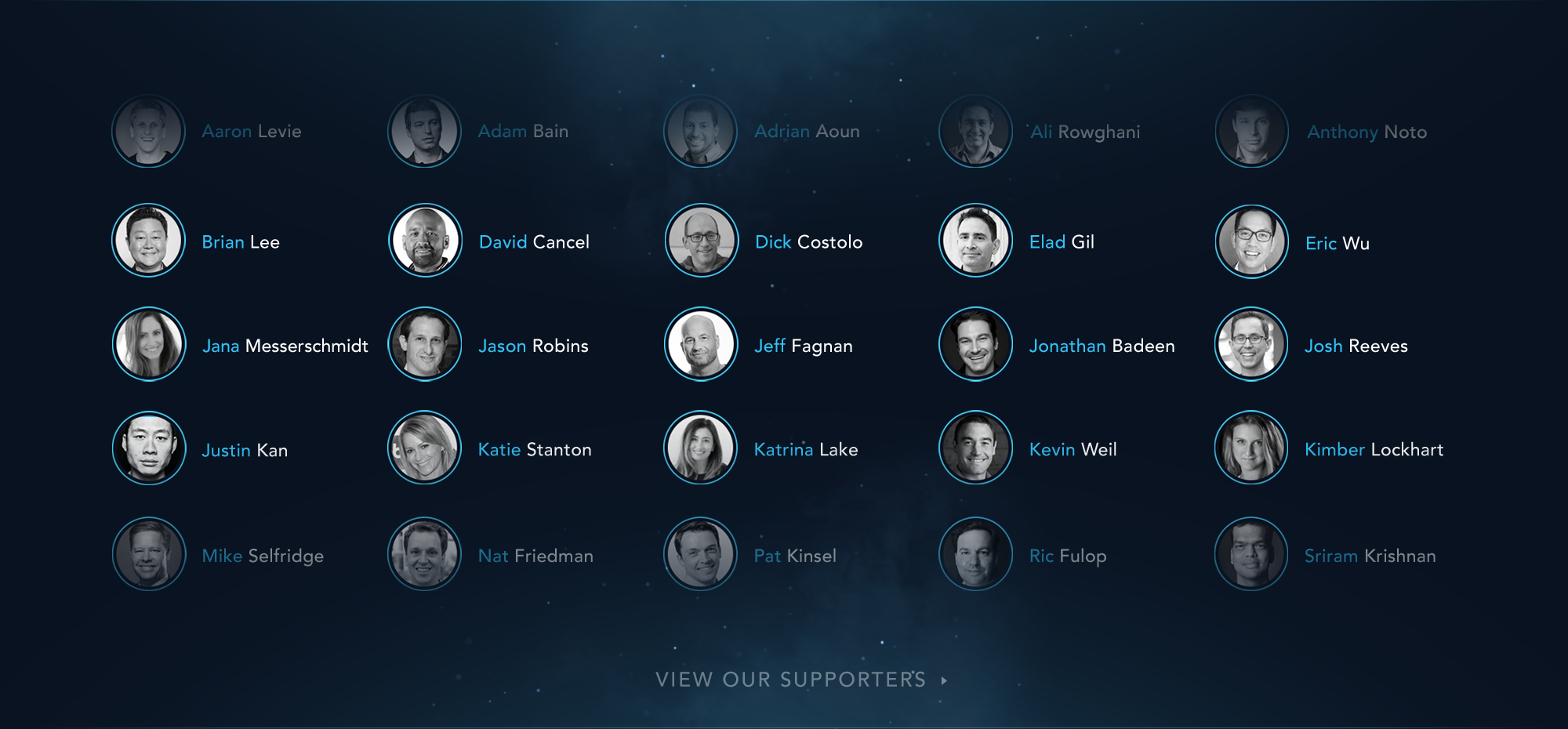A New Definition for Remote Work
To be sure, working remotely is not for every business, and not for every individual.
If your team needs to huddle together to prototype a physical product, that will be tricky. Or if you work for a biotech startup with special lab equipment, it’s likely infeasible to provision it for every home-office. Or if you’re a big-time extrovert who lives for lunchroom gossip and 5pm team socials, this work-style may not be your cup of tea.
But remarkably, we’re now at the point where most software/digital/service-based businesses, and most knowledge-based employees, are well-suited to going fully-remote, and many will be better off if they do! In fact, remote work has already jumped 159% in the past 12 years, but that’s just the tip of the iceberg.
Wayne and I founded Digits 2 years ago to create the next generation of delightful, powerful business finance software, and we had a choice: how should we structure the business? When we landed on building a fully-remote startup, even some of our closest supporters were skeptical.
Can a fully-distributed team be productive?
Won’t everyone just slack off all day?
How do you brainstorm and make product decisions?
But, but… whiteboarding??
We immediately faced these and countless other questions, but we were convinced that we could not build the scale of business we envisioned in San Francisco, and we had a strong distaste for the known challenges of distributed offices.
With the full benefit of hindsight, we could not be happier with our decision. Working as a fully-remote team has been a joy, and we have relentlessly iterated on the tools and techniques we’ve used to make it so.
Here’s just a few of the lessons we’ve learned over the past 2 years building a fully-remote company:
The Key Difference: No HQ
“Remote” isn’t new, and isn’t great. “Fully-remote” is a totally different concept.
Most peoples’ understanding of remote work has been a scattering of remote employees and a big HQ somewhere. As a result, the remote teams miss out on a lot of the ad hoc conversation/culture that develops in the colocated offices, are frequently left out of some meetings (sorry, who forgot to dial-in?), and inevitably begin to feel like 2nd-class citizens.
Trust me, I’ve been there.
A fully-remote team, by contrast, means no conversations are happening in an office somewhere to miss out on. At Digits, the pulse and culture of the company is pushed online for everyone to partake in: what would normally be hallway conversations now happen in some digital form. Chats are quickly upgraded to voice/video calls when written communication is not enough—and there is no stigma towards, or friction preventing, those who were passively following along in the chat room now asking to join live. Everyone is on the same level playing field.
This makes our fully-remote team feel like we aren’t remote at all. We’re all working right next to each other, at adjacent desks, despite being thousands of miles apart. Our remote interactions are a real and meaningful replacement for stopping by a coworker’s desk to chat something out or chasing them down in the hallway.
The moment any part of your team is physically together in an office, all of these critical distinctions begin to break down.
The Buddy System
We aim to run all projects at Digits in micro-teams of 2-3 people. Sometimes 4, but in practice we’ve found they tend to immediately split themselves into pairwise sub-teams.
The major benefit is you always have a buddy. From the moment we kick off the week, you know what your goals are and who you’ll be working with to achieve them, so you can dive right in together.
On the engineering side, this means you always have a designated code-review partner to keep things moving. It varies, but over the last 2 years many of our teams organically started to pair-program (yes, fully remotely) to further align and accelerate their work.
On the business and product sides, it’s the same story. We pair on strategy docs, product wireframes, marketing copy, blog post drafts—you get the idea. And pairing makes the work way more fun! You’re not sitting in your house toiling alone; you’re talking with at least one other colleague constantly, and you’re both working together to achieve a common goal.
It’s easy to think we’re wasting time having at least 2 people tackle every task, but the opposite is true: quality is much higher, each project moves at a faster pace, and in a distributed world, redundancy is critical to increasing the odds that someone knowledgeable about a thing is online and available.
The benefits have been dramatic: nobody is lost in their own world either slacking off or making unilateral (mediocre) decisions. Ideas are iterated and improved rapidly as they are discussed in small groups and then raised for broader awareness. And there is no unwanted overhead or design-by-committee: each micro-team is empowered with their own goals for the week, so they know the direction to head in and are trusted to seek input when and where they need it. If they haven’t, it will become very obvious at our next group check-in 🙂
The Death of 30-Minute Time Slots
To stay in sync and highly aligned as a remote team, we do (short) all-hands meetings every 48 hours. Apart from that, we aim to have no other scheduled meetings.
Of course, interviews do need to be booked, and external customer/partner meetings get scheduled, but the principle holds: work within one’s micro-team is fluid and synchronous—you’re constantly on and off ad hoc video calls or pairing sessions with your buddy, but work between teams is async: via Google docs to review, large PRs that need broader buy-in, blog drafts that need editing, etc.
It becomes the ultimate Maker’s Schedule, for a single reason:
Digits is fully remote, has no office, and owns no conference rooms. This fact is critical.
Without conference rooms, there are no scarce resources to book, which means meetings don’t need to be planned in advance, which means they don’t need to be 30 minutes or an hour long. Chats can happen when the necessary people are available (which in practice is typically within minutes, because teams are small and independent, and no one else is over-scheduled either). You can add people to meetings when they are needed, and they drop off if the topic moves on. There is none of the awkwardness, friction, or wasted time of traveling between, waiting outside of, entering, or leaving, physical conference rooms. It’s truly remarkable.
This has made our typical internal “meeting” last on the order of 5-7 minutes: you hop on, get your questions answered or share your perspective, and return to execution. With the elimination of Parkinson’s Law, the Maker’s Schedule is complete: meetings usually aren’t long enough to knock you out of flow.
This flips the typical work day on its head: rather than running between recurring meetings and trying to “get stuff done” in between, we’re all free to focus on executing until pinged by someone who needs input. And since those interrupts are typically quite short, they aren’t disruptive—you’re right back at it without forgetting where you left off.
All of this creates an interesting reality: we’ve felt that we’ve reliably had more face-to-face interactions with colleagues than we ever did in physical settings. Everyone is more available. There is less friction to chatting—you don’t need to walk across the building to catch someone at their desk. And because the interactions are shorter, they tend to be much more frequent: I’d much rather chat with my teammates for a few minutes every day than a half hour once a week in a standing meeting!
The Remote Work Toolkit
Productivity tools often border on religious choices for many people and organizations, so I hesitate to make specific recommendations.
Instead, it’s more important to focus on the “jobs to be done”—what use case is each tool meant to solve—and then standardize on an answer for each, so everyone on the team knows where to go.
Over the past 2 years, we’ve converged on the following core roles for our tools:
- Asynchronous & semi-synchronous lightweight chat (no important decisions, no expectation of reading scrollback)
- Decision recording & lightweight knowledge sharing
- Long-form strategy and documentation
- Synchronous all-hands video meetings
- Synchronous 1-1 (or small group) video/audio chats
- Pair programming
- Whiteboarding
- Work-tracking/project management
We have preferred to find specific tools that really excel at each of these distinct use-cases (even if we only use a tiny fraction of the tool’s functionality), rather than consolidating on fewer tools that might be less ideal. In practice, we’ve not had much issue forgetting where something is because the use cases are sufficiently distinct and obvious.
We also constantly evaluate and explore new tools, as the pace of innovation in remote collaboration is currently exploding.
For those who insist on asking, our current toolchain at Digits is:

…but it can and will change as new options come on the scene 🙂
We do not use email for anything other than customer support, and I can hand-count the total number of internal emails we’ve sent since starting the company.
A New Set of Employee Benefits
As founders, Wayne and I care deeply about showing company personality through employee benefits. Above and beyond health insurance and 401ks, we try to embrace the remote-work lifestyle to ensure every team member’s day-to-day is as delightful as possible.
Wherever You Work Best
Not everyone “works remotely” the same way. Some people have a home office they have used for years, but that’s really not typical. Usually it’s a difficult choice—do I take over a spare bedroom or underutilized corner of my house or apartment, or do I find a co-working space nearby? Countless factors go into this decision and it would be unfair for us to motivate one over the other.
So we happily support both!
Every new Digits employee gets the choice: if you’d rather work from home, we give you a $2,000 budget to outfit your home office. A great chair. A new desk. Houseplants! A side-table with a coffee bar. Really anything you feel would make your day-to-day more enjoyable. Conversely, if you’d rather go the co-working route, awesome. Pick your favorite spot and we’ll cover your monthly membership fee for a desk.
The Need for Speed
Regardless of which direction you go, we have another perk up our sleeves. We’ve found that everyone works from home sometimes, for many reasons, even if they prefer a coworking environment. And ISP quality varies widely across the country.
Starting last year, we rolled out a new benefit: Digits pays for every employee’s home Internet service, and we immediately upgrade it to Gigabit (or the equivalent fastest available plan)!
Never have you seen a more butter-smooth video-chat experience from so many different homes across the country…
The New Power of Team Travel
Gone are the days of traveling between distributed offices for alignment sessions or making the monthly trek to HQ.
There’s no office at all, so there is nowhere you have to go just to make an appearance or get face-time! Instead, all internal business travel can be deeply intentional, and optimized for creating amazing shared experiences.
At our current stage, we’ve found the ideal cadence is quarterly. 3 times per year, we host our Digits Onsites: we rent a series of AirBnbs (or hotels, as we’ve scaled) and we bring the entire team together somewhere in the country for a jam-packed week of strategic planning, knowledge sharing, in-person work and collaboration, and fun team-building activities and celebratory dinners. During the 4th quarter, we throw our annual holiday party.
And what we’ve learned is that working remotely makes these in-person moments together even more memorable. Time is punctuated by Onsites. Product milestones are marked by the strategy we discussed at each one. Team members’ start dates are recalled by which Onsite they first joined.
There’s always the next one on the calendar to look forward to, and we go to great lengths to make each one special, in some way or another. With no corporate budget dedicated to facilities or inter-office travel (indeed, one month last year our cash burn was 91% payroll-related!), we instead shift those resources to Onsite logistics, with great effect.
The resulting work-life balance has been magical: we are home with our families, with no commute to speak of, day-in and day-out, with flexible schedules and an unlimited vacation policy, and then we’re all together each quarter, exploring someplace new and aligning on our next chapter.
The Future of Work
Without question, we will be forever adapting and refining our approaches to remote work with each new level of scale and degree of business complexity, but we foresee no structural reasons that would cause us to change this basic approach. Indeed, great companies such as GitLab, Invision, Buffer, and many others have pioneered this path with well-recognized success.
At Digits, we’re extremely energized by the growing interest in remote work and the explosion of new tools that are being built to facilitate it, and we’re excited to join the community in sharing and iterating best practices.
These past 2 years have honestly surpassed our wildest expectations: one of our teammates recently expressed that they don’t see themselves returning to an office environment for the rest of their career.
Everyone else nodded in agreement.
If you’re excited to join a passionate, fun-loving, fully-remote team that’s obsessed with building delightful business finance software, we’d love to meet you! See our open positions here.



